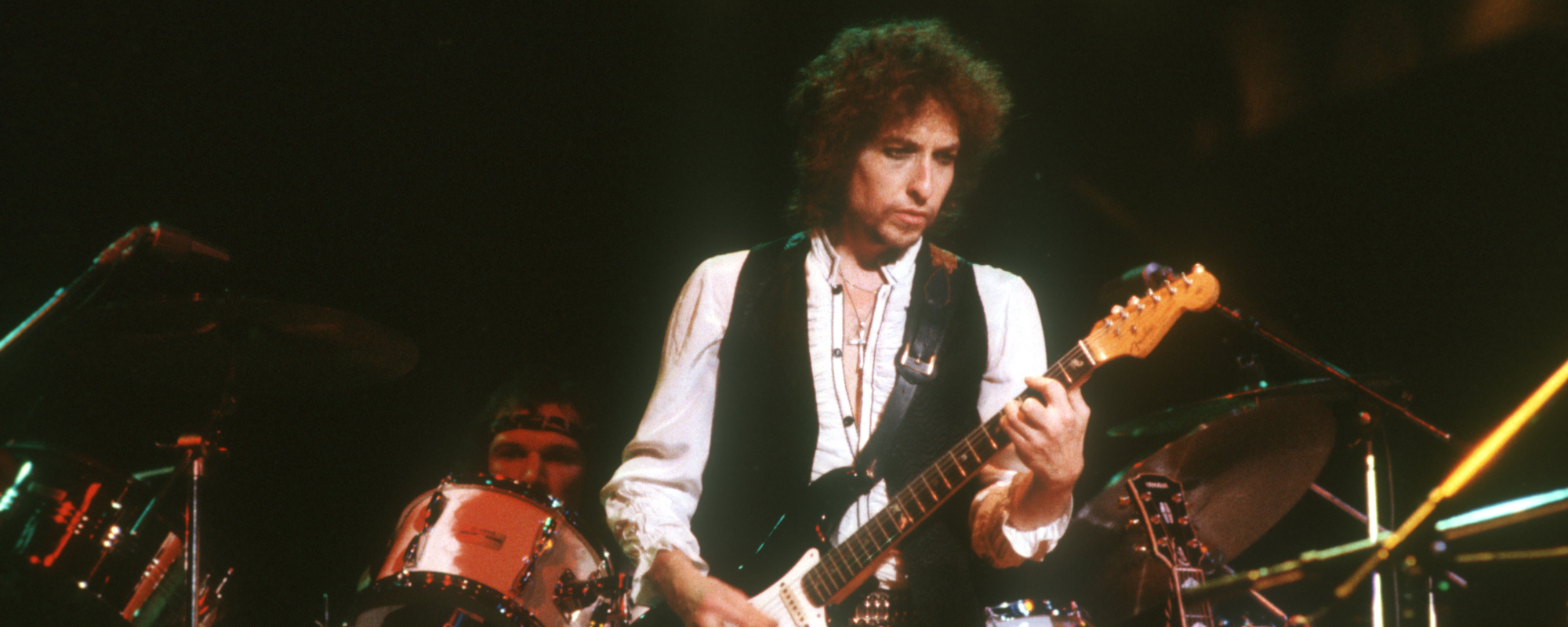If you’re a Hall of Fame-type musical artist these days, you’re likely conducting two careers. There are your new releases, songs and albums that you’re writing and releasing as you go. And then there are the retro releases. The songs, albums, videos, and other ephemera collected over the course of a career that weren’t released the first time around.
Videos by American Songwriter
The releases that fall into the latter category have proven to be quite lucrative for heritage artists. And they largely have Bob Dylan to thank for that. In 1991, Dylan released the first set of his Bootleg Series. These were collected outtakes that hadn’t officially made it onto his studio albums. That record broke down the dam for these kinds of releases. And Dylan was the ideal artist to start this trend.
Dylan’s Lost Treasures
Bob Dylan’s music was the impetus for one of the first and most famous bootleg recordings in rock history. In 1967, Dylan settled in Woodstock, New York with members of what would become The Band. The idea was just to chill out and create songs—nothing more than songwriting demos. Not long after that, copies of those recordings, given the title Great White Wonder, began circulating among music fans.
Dylan’s cutting-room floor also began to swell with songs that he recorded for his studio albums but decided not to include on the finished products. By his own admission, songs that can’t be captured quickly in the studio are a frustration. Although few knew it while it was happening, he was leaving behind songs that were as good as, if not better than, some of most well-known hits and critical favorites.
Dylan gave the Bootleg Series a kind of test run in 1985 when he released the greatest hits package Biograph. Of the 53 songs spread out over five LPs or three CDs, Dylan had yet to release 18. Many of these were live songs or unheard versions of familiar songs, but there were also pristine, epic studio tracks, like “Abandoned Love” and “Caribbean Wind,” that no one, besides astute bootleggers, had ever heard. Maybe Dylan noted how fans met Biograph with such adulation. Perhaps it put an idea in his head to do something on a grander scale with his leftovers.
[RELATED: 5 Songs You Didn’t Know Bob Dylan Wrote for The Band]
Beating the Bootleggers to the Punch
On March 26, 1991, Bob Dylan released The Bootleg Series Volumes 1-3 (Rare & Unreleased). To say the reaction was unanimously fawning would be an understatement. The three discs included 58 tracks, and not a one of those songs had been part of an official release before. While there were a handful of live tracks, the vast majority of these songs were studio recordings that hadn’t seen the light of day.
And what a treasure trove it was. The unearthing gobsmacked casual fans and Dylanologists alike. Early story songs like “Rambling, Gambling Willie” that sound like movies in miniature; extras from his ultra-prolific mid-‘60s period, like the stunning love triangle saga “She’s Your Lover Now”; an ode to baseball legend Jim Hunter on “Catfish”; and, perhaps most revelatory of all, “Blind Willie McTell” and “Foot of Pride,” two masterworks from sessions for the 1983 album Infidels that made everyone simultaneously marvel at Dylan’s talent and wonder at his common sense for not including them on the record.
To listen to the wealth of wonders found on this collection, you might have thought that Dylan had mostly exhausted the vaults. But Dylan had plenty of surprises from the misty past he still planned to bring to the light.
A Series of Dreams
In 1998, a full seven years after it was initiated, Bob Dylan renewed the Bootleg Series with a whopper. Volume 4 (Bob Dylan Live 1966, The “Royal Albert Hall” Concert) captured a searing live show from the time when he was challenging his folk fans by introducing electric material to his repertoire (complete with shouts of Judas from the unfaithful.)
From that point, Bootleg Series releases came out with much more frequency. Some of the eras and milestones covered: a complete set of those famous Great White Wonder/Basement Tapes recordings; the period around his supposed career nadir Self Portrait; the competing versions of the Blood on the Tracks songs; his “Born Again” period in the late ‘70s and early ‘80s; amazing leftovers from his creative comeback in the ‘90s and ‘00s; and so much more.
When Volume 17 of the Bootleg Series, recounting the sessions for his 1997 album Time Out of Mind, was released in 2023, there were news stories that popped up suggesting that the Dylan vaults might finally be running out of gems. But really, do we have a right to ask for anything more? Starting with that 1991 kickoff, Bob Dylan’s Bootleg Series has not only given us a deep dive into one of music’s fascinating artists, it’s also greased the wheels for similar excavations of other legendary back catalogs.
Photo by Evening Standard/Hulton Archive/Getty Images













Leave a Reply
Only members can comment. Become a member. Already a member? Log in.